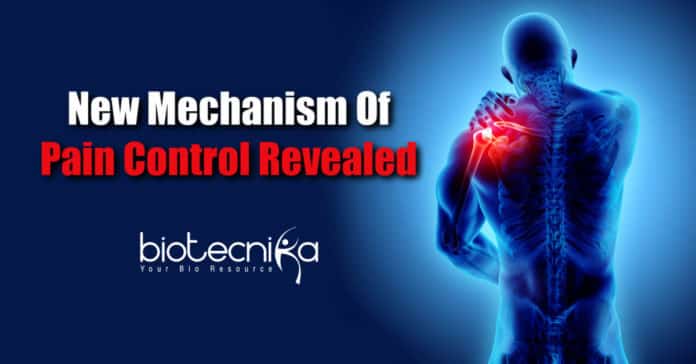Researchers Revealed Novel Method To Control Pain
Japanese researchers revealed a novel mechanism for controlling pain. The mechanism involves a recently uncovered group of cells present in the spinal cord. This novel method offers a possible target for improving the therapeutic effect of medications for persistent pain.
We all very well know that nerve cell neurons of the central nervous system (CNS) play a vital role; however, a set of non-neuronal cells initially uncovered in the mid-nineteenth century also have a wide array of vital functions.
Glial cells named after a Greek word for “glue” are actually more than “glue” as they are essential factors for regulating neuronal development and function in the CNS.
In the CNS, there are many types of glial cells, in which astrocytes are the amplest, yet, unlike neurons in different brain regions, scientists have yet to develop a detailed insight about the groupings of astrocytes with unique properties.
A special population of spinal cord astrocytes with a role in causing pain hypersensitivity has been recently identified by a team led by professor Makoto Tsuda, Kyushu University’s Graduate School of Pharmaceutical Sciences.
The astrocytes are present in an area that provide general sensory info like pain, heat, and pressure to the brain from outside. The region is located in a region known as the superficial laminae of the spinal dorsal horn – the external 2 layers of gray matter near the back of the spinal cord.
The team conducted animal studies to reveal that stimulating noradrenergic nerve cells (uses noradrenaline as a neurotransmitter) bring signals from the locus coeruleus in the brain to the spinal dorsal horn, which activates the astrocytes, causing pain hypersensitivity.
These findings reverse the prevailing opinion that descending locus coeruleus-noradrenergic neurons subdue pain transmission in the spinal dorsal horn.
Tsuda said that exploring this new group of astrocytes discloses a new function of descending locus coeruleus-noradrenergic neurons in helping spinal pain transmission.
Based on this study’s outcomes, suppressing the signaling of these astrocytes by noradrenaline may boost the impact of medications for persistent pain.
To incipiently evaluate this, the team genetically engineered the mice in which the response of astrocytes to noradrenaline was precisely hindered and provided them duloxetine, an analgesic medicine believed to raise levels of noradrenaline in the spinal cord by avoiding uptake by descending locus coeruleus-noradrenergic neurons.
Undoubtedly, the engineered mice displayed a boosted easing of persistent pain by duloxetine, sustaining the teams’ proposed function of the astrocytes.
Tsuda stated that eventhough they still require further researches with various medications; this astrocyte populace seems to be a very hopeful target for boosting the therapeutic capacity of drugs for persistent pain.
Researchers Revealed Novel Method To Control Pain



